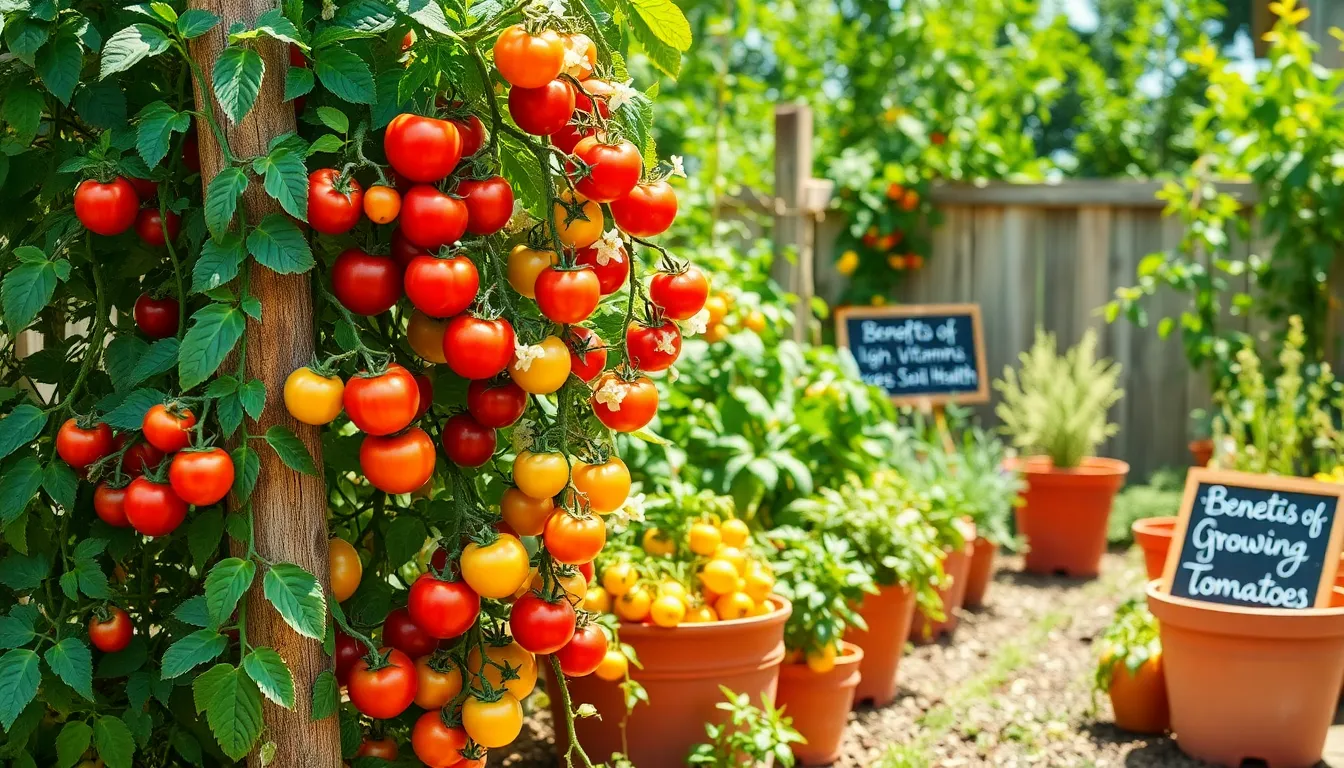Imagine stepping into your garden on a sunny morning, the earthy scent of soil mingling with the crisp air, as vibrant red tomatoes hang like jewels on lush green vines. Growing tomatoes isn’t just about cultivating a plant; it’s about nurturing a small piece of nature that rewards you with flavor-packed produce and a sense of accomplishment. Whether you’re just starting out or have been gardening for years, cultivating tomatoes offers a gratifying experience that connects you to the earth and your food in a deeply satisfying way.
Tomatoes are not only a staple in countless recipes but also a joy to grow, offering lessons in patience, care, and the art of nurturing life. For beginners, they present a manageable challenge—an opportunity to learn essential gardening skills, from sowing seeds to recognizing the perfect harvesting time. Seasoned gardeners, meanwhile, can experiment with different varieties, relish the nuanced flavors of heirlooms, and perhaps even share their bounty with friends and family. In this article, we’ll explore the myriad benefits of growing tomatoes, offering tips and insights that cater to all levels of gardening expertise, ensuring that your tomato-growing journey is as fruitful as the harvest itself.
Nutritional Advantages of Homegrown Tomatoes
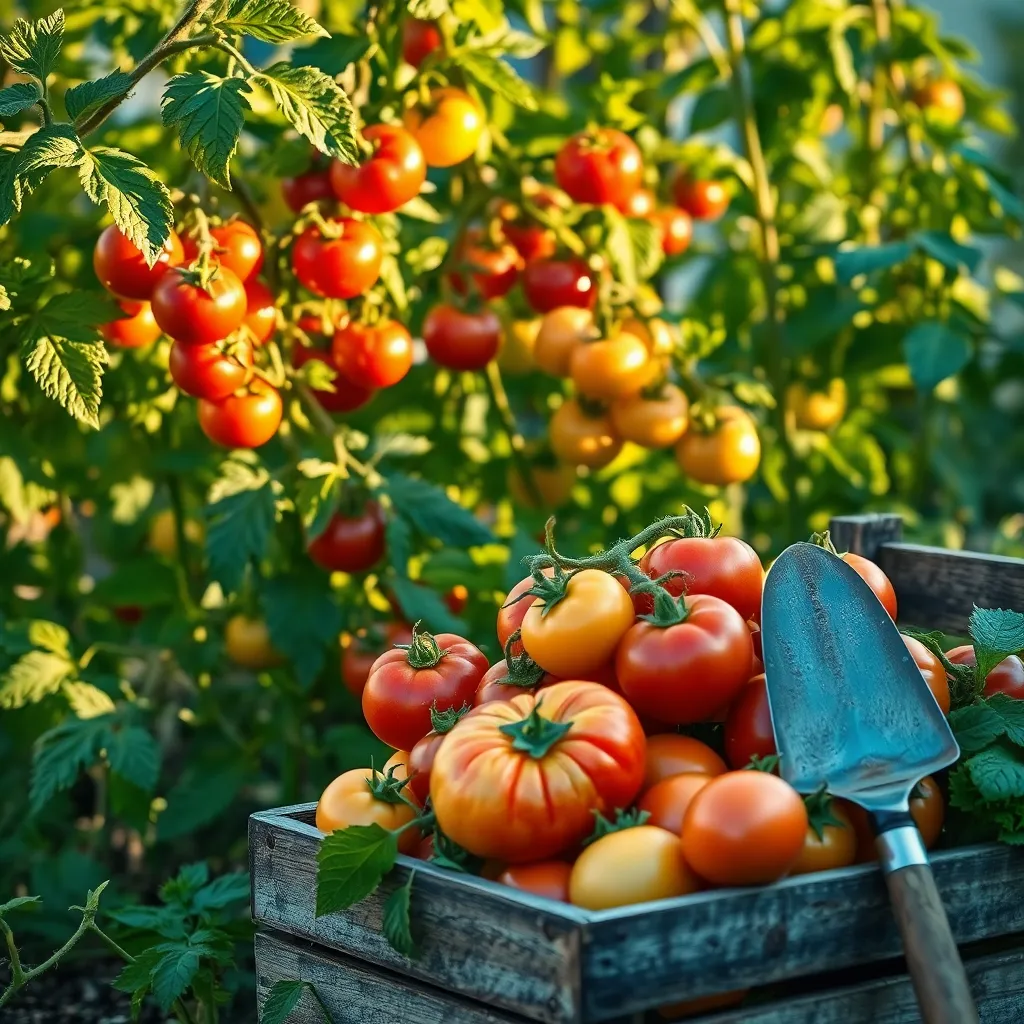
Homegrown tomatoes offer a host of nutritional benefits that make them a valuable addition to any garden. They are rich in vitamins C and K, potassium, and folate, which contribute to overall health and wellness.
Growing tomatoes at home allows you to maximize their nutritional content by harvesting them at peak ripeness. This ensures you enjoy the full spectrum of nutrients, as tomatoes picked too early and ripened artificially may lack some vitamins.
For the best results, plant your tomatoes in a sunny spot with well-draining soil, enriched with organic matter. Consistent watering is crucial, so aim to keep the soil moist but not waterlogged, particularly during fruit development.
Consider incorporating techniques such as mulching with straw or grass clippings to retain soil moisture and suppress weeds. Advanced gardeners might experiment with companion planting, pairing tomatoes with basil or marigolds to enhance growth and deter pests naturally.
Cost-Effectiveness of Growing Tomatoes
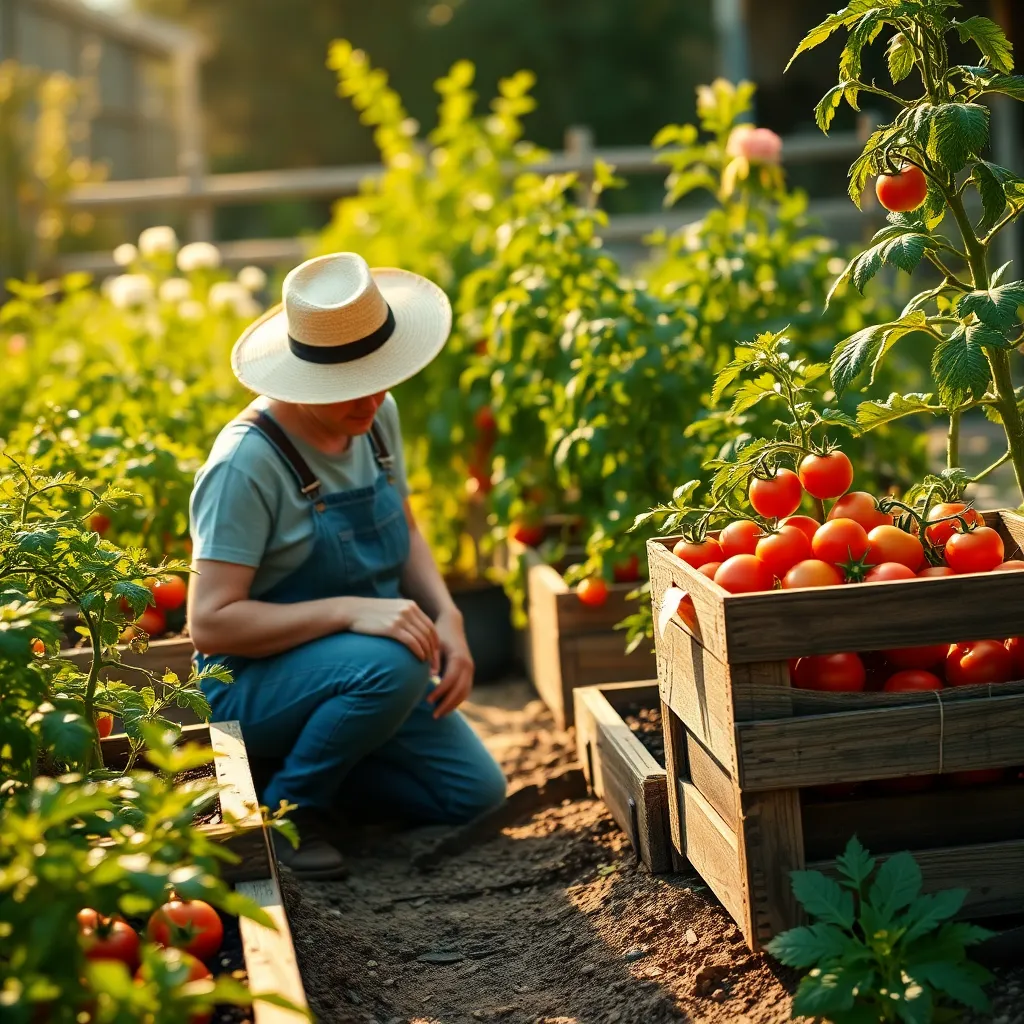
Growing tomatoes can be an incredibly cost-effective endeavor when done correctly. By starting tomatoes from seeds, you significantly reduce the initial cost compared to buying mature plants, with seeds costing only a few cents each.
Additionally, you can save money on groceries by harvesting your own fresh tomatoes throughout the growing season. With careful planning, one tomato plant can yield anywhere from 10 to 15 pounds of tomatoes, which translates to substantial savings compared to store-bought options.
To maximize cost-effectiveness, consider using organic fertilizers and compost made from kitchen scraps. This not only cuts down on expenses but also improves soil quality, ensuring healthier plants and better yields.
For those with limited space, growing tomatoes in containers is a viable option that saves on garden setup costs. Choose a pot that is at least 5 gallons in size, and fill it with a high-quality potting mix to provide the necessary nutrients and drainage.
Watering is crucial for tomato success, and a simple drip irrigation system can help conserve water while ensuring consistent moisture. Consider mulching around plants to retain soil moisture, reduce weeds, and further minimize water usage.
Environmental Impact of Tomato Cultivation
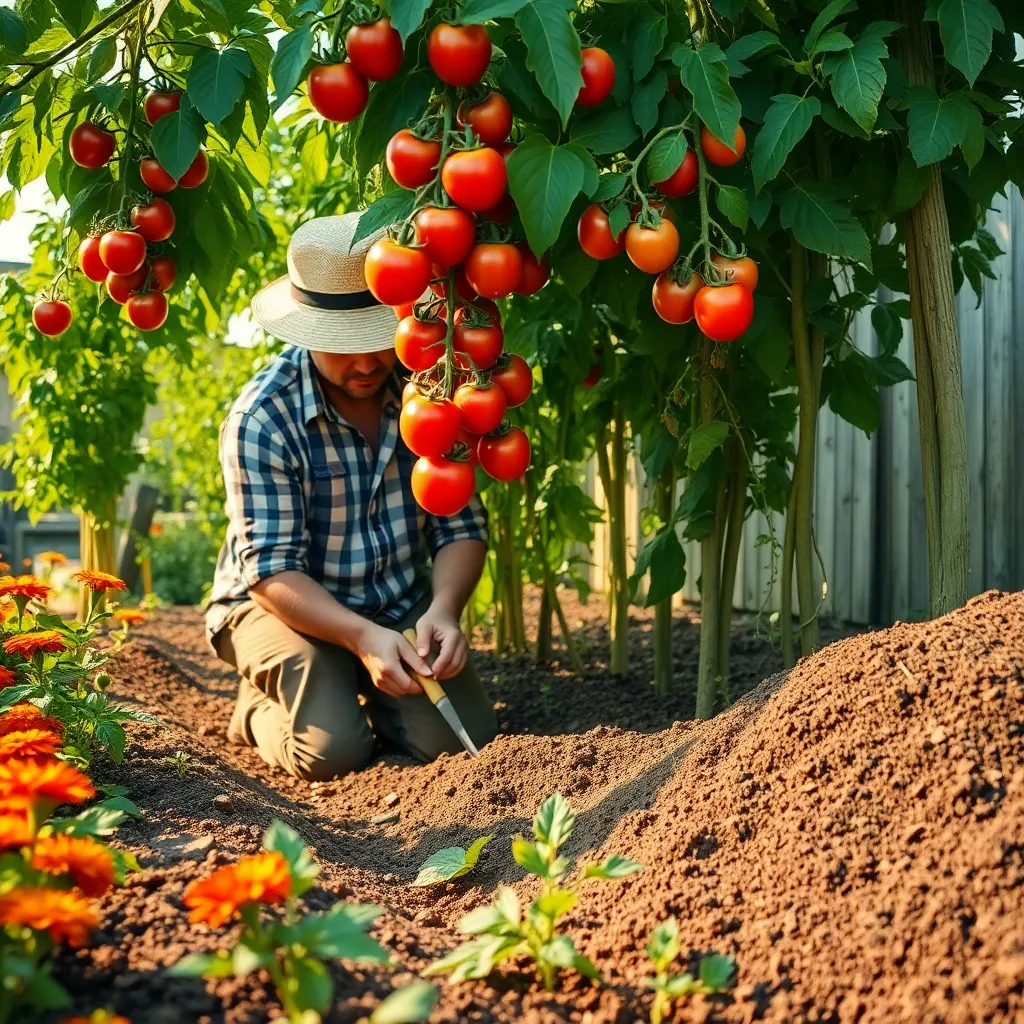
Growing tomatoes can have varying environmental impacts, depending on the methods employed. By adopting sustainable practices, gardeners can significantly reduce their ecological footprint while enjoying fresh produce.
One key aspect is the choice of soil; using organic, nutrient-rich soil can minimize the need for synthetic fertilizers. Composting kitchen waste and using it as a natural fertilizer not only enriches the soil but also cuts down on waste and resource consumption.
Water usage is another critical factor in sustainable tomato cultivation. Implementing a drip irrigation system can reduce water use by up to 60%, ensuring the plants receive moisture directly at the roots without wastage.
Additionally, companion planting can enhance tomato growth while reducing pest problems naturally. Planting basil or marigolds alongside tomatoes can deter common pests such as aphids and whiteflies, minimizing the need for chemical pesticides.
Flavor Enhancements from Homegrown Varieties
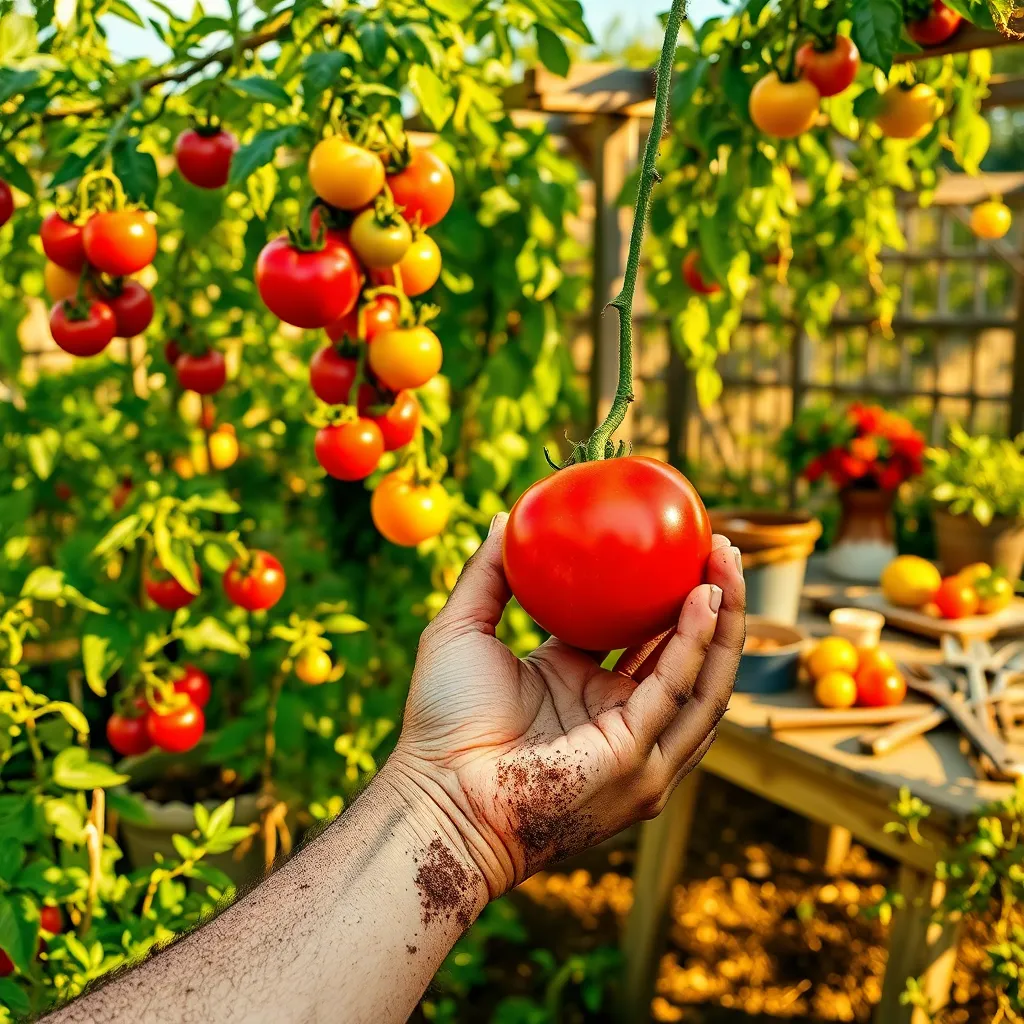
Growing your own tomatoes not only reduces your carbon footprint but also offers a delightful boost to your culinary creations. Homegrown tomatoes can vastly enhance the flavor of your dishes due to their freshness and the ability to select varieties known for their taste.
One of the benefits of home gardening is the ability to choose specific tomato varieties that are known for their superior flavor. Consider growing heirloom varieties, like Brandywine or Cherokee Purple, which are celebrated for their rich, complex taste and juicy texture.
To cultivate these flavorful varieties, ensure your soil is nutrient-rich and well-drained. Incorporating compost or well-rotted manure into your soil before planting will enhance the growth and flavor potential of your tomatoes.
Tomatoes require consistent watering to develop properly, but be careful not to overwater. Aim to provide them with about 1 to 1.5 inches of water per week, either through rainfall or irrigation, ensuring that the soil remains evenly moist.
For those looking to maximize flavor, consider using organic fertilizers and avoiding chemical pesticides, which can impact taste. Companion planting with basil not only helps deter pests but also is said to enhance the tomato’s flavor profile.
Advanced gardeners might experiment with pruning techniques to focus the plant’s energy on fewer fruits, leading to a more intense flavor. Pruning should be done judiciously, removing suckers and excess foliage to allow sunlight to reach the developing fruits.
Therapeutic Benefits of Tomato Gardening

Gardening can be a therapeutic activity, and growing tomatoes is no exception. This process offers a sense of achievement, as you nurture plants from seed to harvest, yielding delicious, homegrown produce.
When you engage in tomato gardening, you’re not just cultivating plants; you’re cultivating patience and mindfulness. Tending to tomatoes requires attention to detail, such as ensuring they receive at least six hours of sunlight daily and consistent watering, which helps reduce stress and enhance mental well-being.
For beginners, start with an easy-to-grow variety like ‘Roma’ tomatoes, which are less susceptible to common pests and diseases. More experienced gardeners can experiment with heirloom varieties, which may require more nuanced care but reward you with unique flavors and vibrant colors.
To maximize the therapeutic benefits, consider incorporating a simple, structured routine into your gardening practice. This could include morning watering sessions and weekly checks for pests, making it a regular part of your schedule and providing consistency and relaxation.
Conclusion: Growing Success with These Plants
In exploring the parallels between nurturing tomatoes and fostering healthy relationships, we’ve uncovered five key concepts: patience in growth, the importance of consistent care, the power of communication, the need for a supportive environment, and the joy of shared harvests. Just as a tomato plant thrives with attentive care, so too do relationships flourish when we invest time and energy into them.
As an actionable next step, take a moment today to identify one area in your relationship that could benefit from a little extra attention—whether it’s setting aside time for a heartfelt conversation or planning a fun activity together. This simple act of nurturing can yield abundant happiness, much like a bountiful tomato harvest.
Remember, a thriving relationship is a journey, not a destination. Save or bookmark this article to revisit these insights as you continue to cultivate love and connection. By doing so, you’ll have a handy reference to guide you through the seasons of your relationship.
Looking forward, with dedication and care, your relationship can blossom into a robust partnership that stands the test of time. Embrace this journey with optimism and watch as your efforts bear the sweetest fruit.

